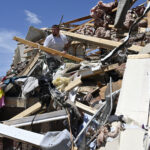California-based Risk Management Solutions (RMS), a provider of products and services for catastrophe risk management, has launched a new multi-line accumulation management system, which is delivered through its market leading RiskLink® and RiskBrowser® software applications.
The new system includes location level data capture capabilities for property and workers’ compensation lines, supported by new building level data developed by Sanborn that will allow insurers, reinsurers, and brokers to pinpoint risk accumulations within dense urban environments down to the level of a specific ‘four-wall’ building.
“To more effectively manage terrorism risk, a carrier needs an integrated view of its accumulated exposure across clients in urban areas and the financial impact of that exposure,” said Gregg Pope, assistant vice president of reinsurance and catastrophe management for Allianz Insurance Company.
The RMS system directly addresses the industry’s needs with new capabilities in RiskLink allowing companies to perform portfolio management analyses to evaluate accumulations across all lines. RMS’ proprietary Spider analysis function automatically searches a portfolio for the highest accumulations. Analysis options also allow a company to quantify accumulations from various financial perspectives, including gross, net, and by reinsurer.
In addition, using RiskBrowser, companies can deploy an underwriting management strategy around accumulations, flagging the underwriter if exposure is being added to an existing accumulation, quantifying the incremental impact of adding an account, and providing drill-down capabilities to evaluate an accumulation area in greater detail. RiskBrowser also provides tools allowing the underwriter to more precisely define the locations associated with new accounts, down to specific buildings in urban areas.
Companies concerned with terrorism risk can utilize the integrated platform to overlay their accumulation management strategy with risk management processes specific to the terrorism peril. Exposure data can be leveraged to estimate losses from terrorism events across both property and workers’ compensation lines using detailed damage footprints from the RMS(TM) U.S. Terrorism model. In addition, underwriting guidelines can be created around potential terrorist targets, identified in consultation with leading global experts on terrorist activity and targeting strategies.
Was this article valuable?
Here are more articles you may enjoy.

 Harvard Settles Lawsuit by Former Student Claiming Antisemitism
Harvard Settles Lawsuit by Former Student Claiming Antisemitism  Central US Severe Weather Outbreak Caused Billions in Damages, AccuWeather Says
Central US Severe Weather Outbreak Caused Billions in Damages, AccuWeather Says  Two Chevron Workers Die of Injuries From Angola Platform Fire
Two Chevron Workers Die of Injuries From Angola Platform Fire  Report Shows Cargo Theft Risk at All-Time Highs as Memorial Day Weekend Nears
Report Shows Cargo Theft Risk at All-Time Highs as Memorial Day Weekend Nears 